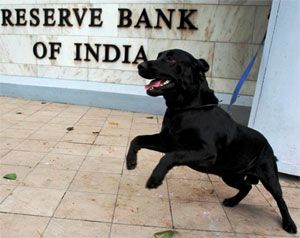 India Inc on Tuesday said a cut in key rates by the Reserve Bank would have been propitious for growth, even as it hailed the central bank's move to slash statutory liquidity ratio, saying it will give more room to banks for onward lending to the corporate sector.
India Inc on Tuesday said a cut in key rates by the Reserve Bank would have been propitious for growth, even as it hailed the central bank's move to slash statutory liquidity ratio, saying it will give more room to banks for onward lending to the corporate sector.
The industry also emphasised on supply-side interventions by the government to tackle persistently high food inflation.
"While we expect the government to attack food inflation through administrative and policy fixes from the supply-side, we would have appreciated the central bank facilitating a revival of capital expenditure cycle by exhibiting a softer stance on policy rates," Ficci President Sidharth Birla said.
Steadfast on his resolve of keeping inflation under check, RBI Governor Raghuram Rajan today left key rates unchanged and unlocked about Rs 40,000 crore (Rs 400 billion) of funds by reducing the amount of deposits banks are required to park in government securities.
"CII recognises the concerns about inflation that have restrained RBI from reducing key policy rates but by easing liquidity in the system by lowering SLR it has ensured that
The repo rate, at which the Reserve Bank of India lends to banks, has been retained at eight per cent, while the statutory liquidity ratio for banks has been cut by 0.5 per cent to 22.5 per cent with effect from June 14.
However, Assocham President Rana Kapoor said: "While SLR cut by 50 bps will make available a little more money for lending by banks, the issue facing the industry at this point of time is not so much of liquidity but the cost of borrowing.
"With robust foreign inflows, the system has ample liquidity".
The cash reserve ratio for banks has been kept unchanged at four per cent.
"A reduction in the SLR will give banks more freedom to expand credit to the non-government sector," PHD Chamber of Commerce President Sharad Jaipuria said.
The RBI has increased the key repo rate three times since Rajan took over as Governor in September last year.
India's economic growth stayed below five per cent for the second year in a row at 4.7 per cent in 2013-14 and growth remained subdued at 4.6 per cent in the fourth quarter.










